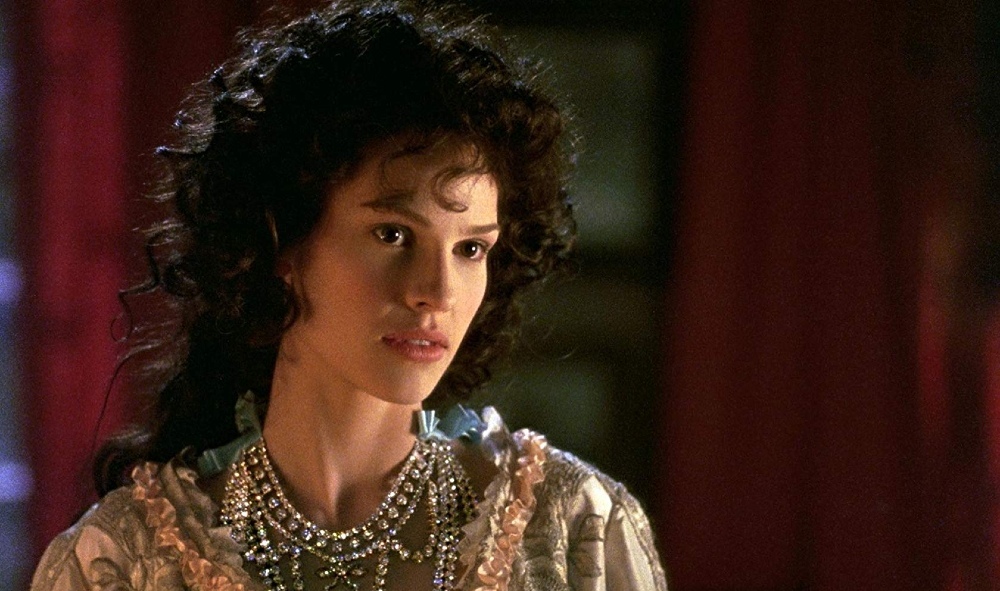In the words of Mirabeau, the affair of the diamond necklace was the prelude to the French Revolution. Its disappearance is also used as a starting point for the series Lupin, available on Netflix in France and the United States since January 8. Omar Sy (The Intouchables, Jurassic World, X-Men: Days of Future Past) plays a contemporary version of Arsène Lupin, the iconic gentleman burglar invented by novelist Maurice Leblanc in 1905. Just like his literary alter-ego, he excels in the art of disguise, illusion, and sleight of hand.
Lupin puts these skills to good work in the very first episode, slipping into an auction hosted under the glass pyramid at the Louvre and stealing the famous Queen’s Necklace, set to be sold for 17 million euros. In the short story, The Queen’s Necklace, published in French magazine Je sais tout in April 1906 (then in the Arsène Lupin, gentleman-cambrioleur collection in 1907), the young Lupin was only six years old when he stole the renowned piece of jewelry from his cousin, the Duke of Dreux-Soubise! This exploit proves his talent for thieving and lauches his career.
However, the necklace behind these fictional tales is in fact real. Historian Evelyne Lever, who wrote a book on the subject, described it as an “extraordinary piece of jewelry” with 647 diamonds weighing in at 2,840 carats. This masterpiece was commissioned by King Louis XV for his mistress, Madame du Barry, but it was soon believed to be cursed. The king died before the necklace was completed and it remained in the possession of its creators, Parisian jewelers Charles-Auguste Boehmer and Paul Bassenge, who fell into debt while trying to source so many precious stones. In the end, the piece was unsellable. “It was worth 1.6 million French livre,” says Evelyne Lever. “At the time, that money could buy four châteaux in the Ile-de-France region, including the buildings and the grounds!”
A Cunning Deception
This is when Cardinal de Rohan arrived. One of France’s leading chaplains, he was in disgrace with Queen Marie-Antoinette, who had pushed him out of her inner circle for his lewd morals. The cardinal was prepared to do anything to regain her trust. One of the members of his entourage was a certain self-proclaimed “Countess” de La Motte, a descendent of one of Henri II de Valois’ illegitimate sons. This natural trickster claimed to be a friend to the queen, and promised to restore the cardinal to his original status. With this in mind, she organized a meeting in the Queen’s Grove, in the gardens of Versailles, on the evening of August 11, 1784. A woman pretending to be Marie-Antoinette met the cardinal and reassured him about the situation. Rohan was over the moon!

Jewelers Boehmer and Bassenge offered their sumptuous necklace to Louis XVI in 1782, but the queen refused on the grounds that it was immeasurably expensive. Madame de La Motte told the cardinal Marie-Antoinette wanted this prize piece, and he agreed to act as an intermediary, negotiating a plan of four payments over two years. The jewelers were delighted to have finally found a buyer, and presented the cardinal with the necklace on February 1, 1785. He then handed it over to Madame de La Motte, who promptly disappeared with her accomplices and sold the diamonds abroad.
Boehmer approached Madame Campan, Marie-Antoinette’s lady-in-waiting, surprised that he had not received the full payment for the necklace. With that, the affair was discovered. On August 15, 1785, before celebrating mass in the royal chapel, Rohan was arrested in the Hall of Mirrors while the members of the court looked on in astonishment. The cardinal was judged before the Paris Parliament in May 1786. Against all expectations, he was acquitted. Madame de La Motte and her conspirators were arrested and judged in turn, and she was branded with a V for voleuse (“thief”).
The Fall of the Queen
Despite her innocence, the queen was painted as the guilty party. The country was gripped by a major financial crisis, with members of parliament and all other high-society figures criticizing the king and his finance minister, Calonne, for wanting to introduce a nationwide tax, even for the rich! They seized upon the necklace affair as a pretext for tarnishing the queen’s image, which indirectly weakened the government. Marie-Antoinette was slandered, seen by the people as the instigator of the scandal! She was accused of being a gold digger and having worked to destroy the cardinal she hated. Her unpopularity was at its height and the Revolution began three years later, leading the queen to her tragic demise…

This incredible fraud gave rise to the superb novel by Alexandre Dumas, The Queen’s Necklace, which went on to inspire Maurice Leblanc’s works, a volume in the Blake and Mortimer comic book series, and several movie adaptations. The necklace was worn by Hillary Swank in Charles Shyer’s 2001 film, The Affair of the Necklace, and more recently was featured on a statue at the Met Gala in the heist movie Ocean’s 8!
In Lupin, the auctioneer declares that the queen’s necklace disappeared in the “twists and turns of the Revolution” before reappearing on different occasions in the possession of Napoleon, in Russia, in Constantinople, and in the secret treasure room of the Third Reich! The most plausible hypothesis is that the necklace was broken up before its gemstones were sold across Europe and lost forever. However, there are three reproductions still in existence, at Versailles, at the Château de Breteuil southwest of Paris, and in Switzerland, owned by Bassenge’s descendants. The original artefact was never found again, but its legend is more alive than ever!












